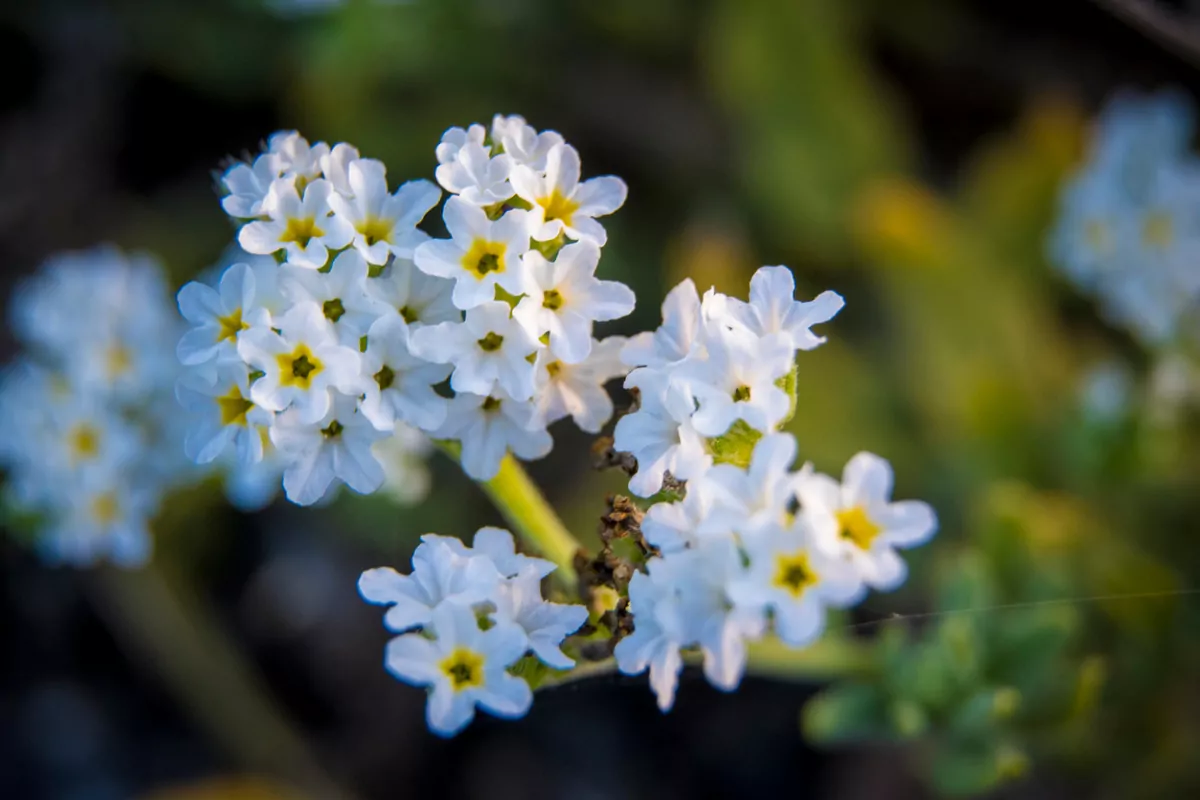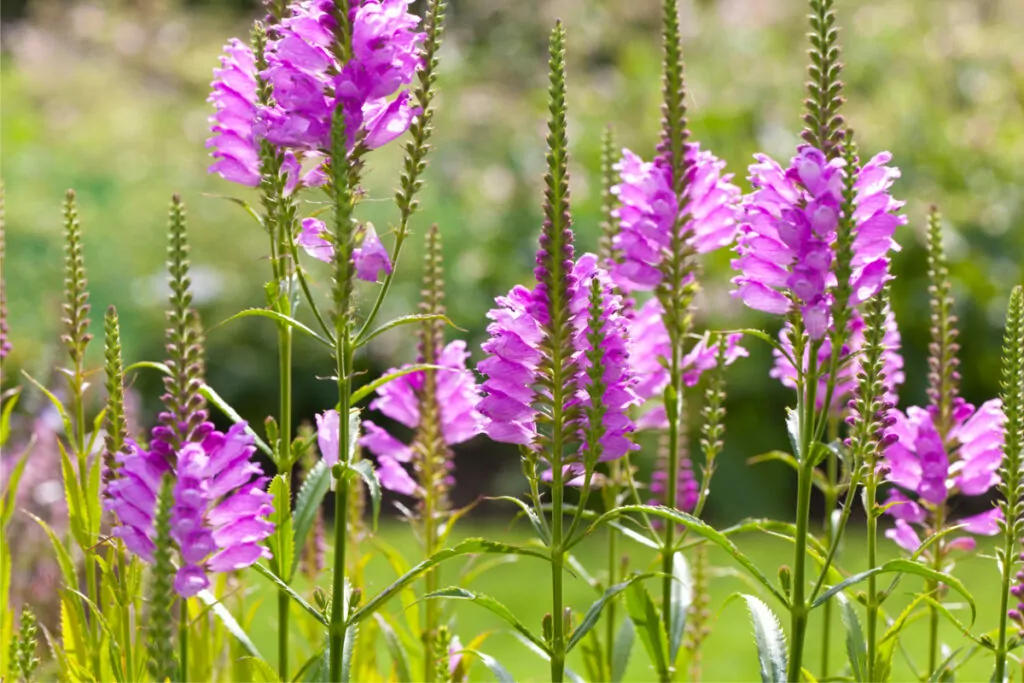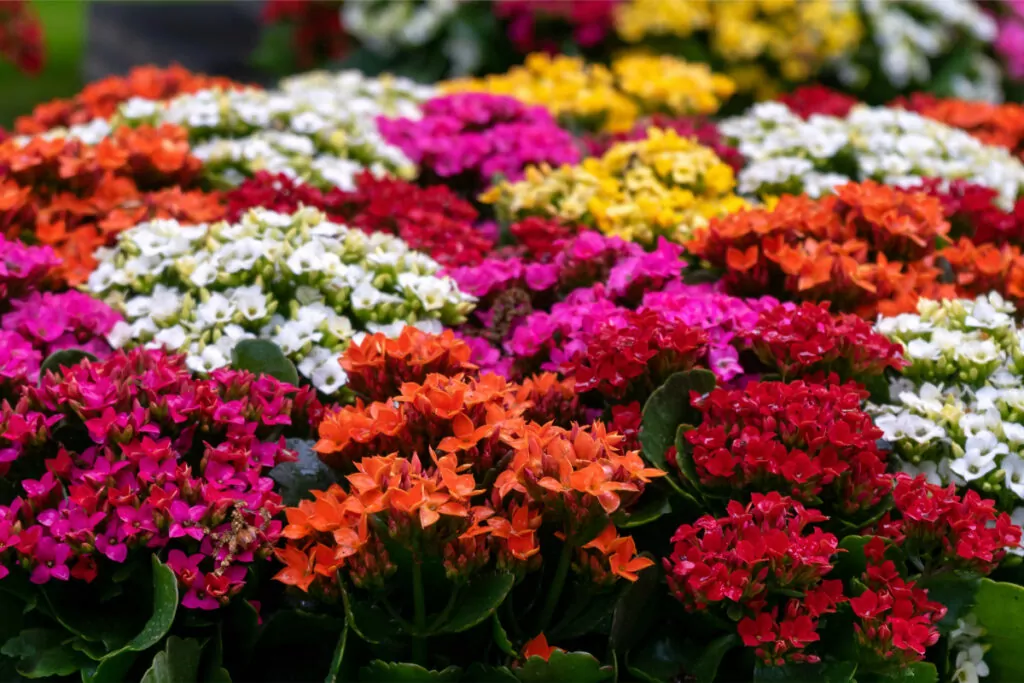Are you in search of a unique and captivating flower to bring life to your garden? Look no further! In this blog post, we’ll take you on a journey into the fascinating world of flowers that begin with the letter F. These blooms possess distinct characteristics that add charm, variety, and a touch of botanical wonder to your gardening experience.

Key Takeaways
Flowers starting with F offer a diverse range of captivating features that enhance the beauty of any garden or landscape. Let’s explore some of the most interesting F flowers:
- Fairy Duster: Delicate Pink Blooms that Attract Hummingbirds and Butterflies
- False Rue Anemone: Simple Yet Captivating Charm
- Fern Leaf Yarrow: Tall Stature and Delicate Fern-Like Foliage
- Fire Pink: Striking Scarlet-Red Blooms for Pollinator-Friendly Gardens
- Firecracker Flower: Exotic Beauty with Vibrant Petals and Stunning Leaves
- Fivespot: Delicate Petals with Deep Purple Markings
- Flame Nettle: Exquisite Flame-Like Petals and Beautifully Colored Leaves
- Flannel Flower: Symbolizing Purity and Softness with Creamy Blooms
- Flax Flower: Versatile Aesthetic Appeal and Practical Use
- Floss Flower: Small and Fluffy Tubular Flowers in Various Shades
- Forget Me Not: Symbolizing True Love and Memory
- Frangipani: Exotic Tropical Beauty with a Fragrant Scent
- Freesia: Elegant Appearance and Enticing Fragrance
- French Marigold: Aromatic Foliage and Natural Pest Deterrent
- Frikart’s Aster: Abundant Blooming in Vibrant Colors
- Fuschia: Eye-Catching Colors and Pendulous Flowers
- Fumewort: Unique Tubular Flowers in Pink, Purple, and White
Understanding the Basics: Flowering Plants and their Anatomy

Before we dive into the captivating F flowers, let’s gain a basic understanding of flowering plants. Flowering plants, also known as angiosperms, form the most diverse group in the plant kingdom. Unlike other plant groups, such as gymnosperms, angiosperms produce seeds within a fruit, giving them a unique characteristic.
Flowering plants employ various mechanisms for pollination and fertilization, ensuring their successful propagation. Some rely on wind or water for pollination, while others entice specific birds, bees, or insects with their colorful petals and aromatic scents. Understanding the anatomy of these flowers, including sepals, petals, stamens, and pistils, is essential for successfully cultivating F flower varieties.
Parts of Plants for Kids | Learn all about plant parts and their functions
Interesting Flowers Beginning with F: A Closer Look

Now, let’s delve into the captivating world of F flowers and explore their unique characteristics:
Fairy Duster
The Fairy Duster, with its delicate pink blooms, has a whimsical appearance that attracts hummingbirds and butterflies. This low-growing shrub is native to desert and grassland regions and thrives in full sun. Its drought-tolerant nature makes it an excellent choice for xeriscape gardens.
False Rue Anemone
Despite its misleading name, the False Rue Anemone possesses simple yet captivating charm. Thriving in cooler climates, this flower adds elegance to any garden. Although not commonly found as a houseplant, it is a wonderful addition to outdoor spaces.
Fern Leaf Yarrow
With its tall stature and delicate fern-like foliage, the Fern Leaf Yarrow adds a touch of elegance to gardens and landscapes. This plant produces bright golden flowers and thrives in well-drained soil. It makes a stunning border plant or focal point in any garden.
Fire Pink
The Fire Pink boasts striking scarlet-red blooms that instantly brighten up any garden. This perennial plant attracts butterflies, hummingbirds, and bees, making it perfect for pollinator-friendly gardens. It thrives in well-drained soils and tolerates dry conditions with ease.
Firecracker Flower
The Firecracker Flower, with its vibrant orange, pink, or red blossoms, adds an exotic touch to gardens and landscapes. This flower, native to southern Sri Lanka and India, makes a bold statement in outdoor spaces. Its distinct beauty allows it to thrive in various environments.
Fivespot
Fivespot is a lovely spring-flowering perennial that adds charm to any garden. Its delicate white or light blue petals, adorned with deep purple markings, create a unique appearance. Thriving in moist soil and partial shade, it is an ideal choice for borders or near ponds and pools.
Flame Nettle
The Flame Nettle is a captivating flower known for its exquisite flame-like petals and beautifully colored leaves. Native to Australia and Southeast Asia, this flower adds a touch of exotic beauty to gardens and landscapes. It adapts well to different growing conditions, including partial shade and well-draining soil.
Flannel Flower
The Flannel Flower, with its soft creamy blooms, symbolizes purity and softness. This perennial plant native to Australia delights with its felt-like foliage. It grows well in well-drained soil and can be cultivated in full sun or partial shade. Bees and butterflies are attracted to its beauty.
Flax Flower
The Flax Flower, also known as Linum Usitatissimum, offers both aesthetic appeal and practical uses. With its elegant light blue petals, dark blue centers, and white anthers, it adds a touch of elegance to any garden or landscape. This flower has been cultivated for centuries for its beauty and the production of linen cloth and oil.
Floss Flower
The Floss Flower, scientifically known as Ageratum, is a lovely herbaceous annual plant native to South America. Its small, fluffy, tubular flowers come in various shades of blue, purple, pink, and white. Floss Flowers are easy to care for and attract butterflies and bees. They bloom continuously from summer to fall, making them ideal for borders, containers, or floral arrangements.
Forget Me Not
Forget Me Nots are charming herbaceous plants native to Asia and Europe, symbolizing true love, loyalty, remembrance, and memories. These delicate flowers produce light blue flowers with five petals and yellow centers. They thrive in moist soil and partial shade, making them a lovely addition to gardens and bouquets.
Frangipani
Frangipani, also known as Plumeria, is a beautiful tropical flower with an exotic and intoxicating fragrance. Native to warm regions such as Central America, the Caribbean, and Polynesia, it blooms in vibrant colors, including white, yellow, pink, and red. Frangipani is often used in traditional Hawaiian leis and is a symbol of beauty.
Freesia
Freesia, a member of the Iridaceae family, is known for its elegant appearance and enticing fragrance. Native to South Africa, it is a popular garden plant and widely cultivated as a cut flower. Freesias are available in various colors, such as white, yellow, pink, purple, and blue. They represent purity and friendship and prefer well-drained soil and moderate sunlight.
French Marigold
The French Marigold, scientifically known as Tagetes Patula, is a beautiful flower native to Mexico and Guatemala. Its eye-catching yellow and red striped petals make it a popular addition to gardens and landscapes. Apart from its aesthetic appeal, this annual plant acts as a natural pest deterrent in vegetable gardens, keeping aphids and nematodes at bay. French marigold thrives in full sun and well-drained soil, making it an easy-to-grow option for gardeners of all levels.
Frikart’s Aster
Frikart’s Aster is a lovely flowering plant that is popular among gardeners for its abundant blooming and vibrant colors. This perennial plant, native to Europe, thrives in well-drained soil with full sun exposure. Frikart’s Aster can grow up to 2 feet tall and produces stunning daisy-like flowers in purple, pink, or white. Its long-lasting blooms attract pollinators such as bees and butterflies, adding life and color to any garden landscape.
Fuschia
Fuschia, although not on our list of interesting flowers beginning with F, is a vibrant and eye-catching flower that deserves to be mentioned. With its bright and bold colors, Fuschias add a touch of beauty to any garden or floral arrangement. These perennial plants, native to Central and South America, produce pendulous flowers in shades of pink, purple, red, and white. Fuschias thrive in partially shaded areas with moist soil, making them an excellent choice for creating a colorful display in outdoor spaces. However, they require some extra attention due to their unique requirements for sunlight exposure and watering frequency.
Fumewort (Corydalis solida)
Fumewort, scientifically known as Corydalis solida, is a one-of-a-kind and fascinating flower that begins with the letter F. This flower is native to South America and is commonly grown as a houseplant, but it can also thrive outside in zones 10 to 12. With its small tubular flowers available in pink, purple, and white, Fumewort adds a touch of beauty to any garden or indoor space.
Unique Characteristics of Flowers That Start With F
Flowers beginning with the letter F possess a wide range of distinct characteristics that make them stand out in any garden or floral arrangement. These flowers are full of vibrant colors and unique growth habits that captivate and intrigue. Let’s explore some of the fascinating features that set them apart!
A Kaleidoscope of Colors
One of the most intriguing aspects of F flowers is their incredible color diversity. From mesmerizing blues and purples to stunning pinks, oranges, and reds, each F flower adds a vibrant splash of color to any landscape. Whether it’s the delicate petals of the Floss Flower or the fiery hues of the Firecracker Flower, these blooms are sure to catch your eye and bring joy to your garden.
Exclusive Origins
Many F flowers are native to specific regions, which adds to their exclusivity and rarity. You can find these floral wonders in places like California, Arizona, New Mexico, Texas, Mexico, and even Australia. Their unique origins make them even more special and sought after by flower enthusiasts.
Shapes and Sizes
F flowers come in a variety of shapes and sizes, offering a diverse range of visual appeal. Some F flowers are low-spreading shrubs, like the Fairy Duster, that add a charming touch to your garden. On the other hand, you have tall perennials such as the French Marigold that stand tall and proud, creating a stunning focal point. The growth habits of F flowers vary greatly, giving you endless options to explore and experiment with in your garden.
Growing Requirements
The growing requirements of F flowers can differ significantly based on the species. Some thrive in well-draining soils, like the Flame Nettle, while others prefer moist soils, such as the Fern Leaf Yarrow. It’s important to understand the specific needs of each F flower you choose to cultivate to ensure their healthy growth and longevity. By providing the right conditions, you’ll be rewarded with flourishing and vibrant blooms.
Bursts of Color Throughout the Year
Flowers beginning with the letter F offer a wide range of blooming periods, ensuring that your garden remains in full bloom for much of the year. While some F flowers, like the Forget-Me-Not, bloom from late winter to early spring, others, like Freesia, grace us with their beauty from May to October. By carefully selecting a variety of F flowers, you can create a garden that delights you with continuous bursts of color and fragrance.
Fascinating Foliage
Not only do F flowers delight us with their beautiful blooms, but some also possess distinct foliage characteristics. For example, Fig Marigold features succulent leaves that add an intriguing element to its overall appearance. The combination of striking flowers and unique foliage creates an enchanting visual experience that will leave you in awe.
Add Intriguing F Flowers to Your Garden
Now that you know about the unique characteristics of F flowers, why not consider adding some of these enchanting blooms to your gardening repertoire? With their captivating colors, varied shapes, and fascinating growth habits, F flowers are sure to elevate the beauty of your garden and bring you endless joy and fascination.
Parts of Plants for Kids | Learn all about plant parts and their functions
How to Grow and Care for F Flowers
To ensure the successful growth and care of your F flowers, follow these simple steps:
Choose the right spot: F flowers thrive in areas that receive adequate sunlight. Most F flowers prefer full sun or partial shade, so choose a location that meets their sunlight requirements.
Prepare the soil: Before planting, remove any weeds or debris from the soil. Improve drainage by tilling the soil and incorporating organic matter like compost to provide essential nutrients.
Planting: Follow the recommended spacing guidelines for each F flower variety. Dig a hole slightly larger than the root ball, place the plant, and gently firm the soil around it.
Watering: Regular watering is essential to keep your F flowers hydrated, especially during hot and dry weather. Water deeply at the base of the plants to prevent fungal diseases rather than spraying water overhead.
Fertilizing: Feed your F flowers with a balanced fertilizer according to the package instructions. This will provide them with the necessary nutrients for healthy growth and vibrant blooms.
Mulching: Apply a layer of mulch around your F flowers to retain moisture, suppress weed growth, and regulate soil temperature.
Pruning: Regularly trim dead or wilted flowers to encourage continuous blooming and maintain a neat appearance. Some F flowers may require pruning in late winter or early spring to promote new growth.
Pest and disease control: Keep an eye out for common pests and diseases like aphids and powdery mildew. Use organic pest control methods or apply appropriate fungicides if necessary.
Winter care (if necessary): For perennial F flowers, protect them from harsh winter conditions by adding a layer of mulch around their base or covering them with frost cloth.
Enjoy the beauty: Sit back, relax, and admire the beauty of your F flowers as they bloom and add color to your garden or indoor space. Take pleasure in the rewards of your care and watch your F flowers flourish.
The Role of F Flowers in the Ecosystem
Flowers beginning with the letter F play a crucial role in supporting biodiversity and maintaining a healthy ecosystem. Floss Flower, French Marigold, Fairy Duster, Flax Flower, Firecracker Flower, and many others attract important pollinators like bees and butterflies. By providing nectar and pollen, F flowers contribute to the survival of these essential creatures and help ensure the reproduction of various plant species.
Furthermore, some F flowers have economic applications. Flax Flower, known for its light blue petals, is cultivated for the production of linen cloth and oil. These flowers not only bring beauty to our lives but also have practical uses that have been valued for centuries.
In conclusion, F flowers are not only visually stunning but also integral to the balance and health of our ecosystem. By incorporating these flowers into your garden, you contribute to the well-being of pollinators and create a vibrant and harmonious natural environment.
Conclusion
Flowers beginning with the letter F bring a touch of enchantment and uniqueness to any garden or floral arrangement. With their vibrant colors, diverse shapes and sizes, and fascinating growth habits, these flowers captivate our senses and ignite our curiosity. From the delicate petals of the Floss Flower to the fiery hues of the Firecracker Flower, each F flower has its own story to tell.
In the realm of flowers, those beginning with the letter F stand out as extraordinary and captivating. With their unique characteristics, vibrant colors, and ecological significance, F flowers offer us a glimpse into the awe-inspiring wonders of the botanical realm. So embrace the magic of F flowers and let them bring joy, beauty, and a sense of wonder to your life.
FAQ
Can you suggest some interesting flowers that begin with the letter F?
Certainly! Some fascinating flowers that start with F include Freesia, Foxglove, Forget-Me-Not, and Fernleaf Bleeding Heart.
What are the characteristics of Freesia flowers?
Freesias are well-known for their delightful fragrance and come in a variety of colors, such as white, yellow, pink, and purple. These funnel-shaped flowers grow on tall stems and form clusters, creating a stunning visual display.
How tall do Foxglove flowers grow?
Foxglove plants can reach heights of up to 5 feet and produce tall spikes adorned with tubular flowers in shades of pink, purple, white, or yellow. Their unique shape attracts bees and hummingbirds, adding life and movement to your garden.
Are Forget-Me-Not flowers easy to grow?
Yes, Forget-Me-Not flowers are relatively easy to grow. They prefer moist soil and partial shade, and their delicate blue or pink star-shaped blossoms self-seed readily if allowed to flower. These charming flowers bring a touch of whimsy to any garden or floral arrangement.
- Interesting Flowers That Start With A - July 21, 2023
- Interesting Flowers Beginning With H - July 21, 2023
- 14 Fascinating Flowers That Begin With C - July 20, 2023
